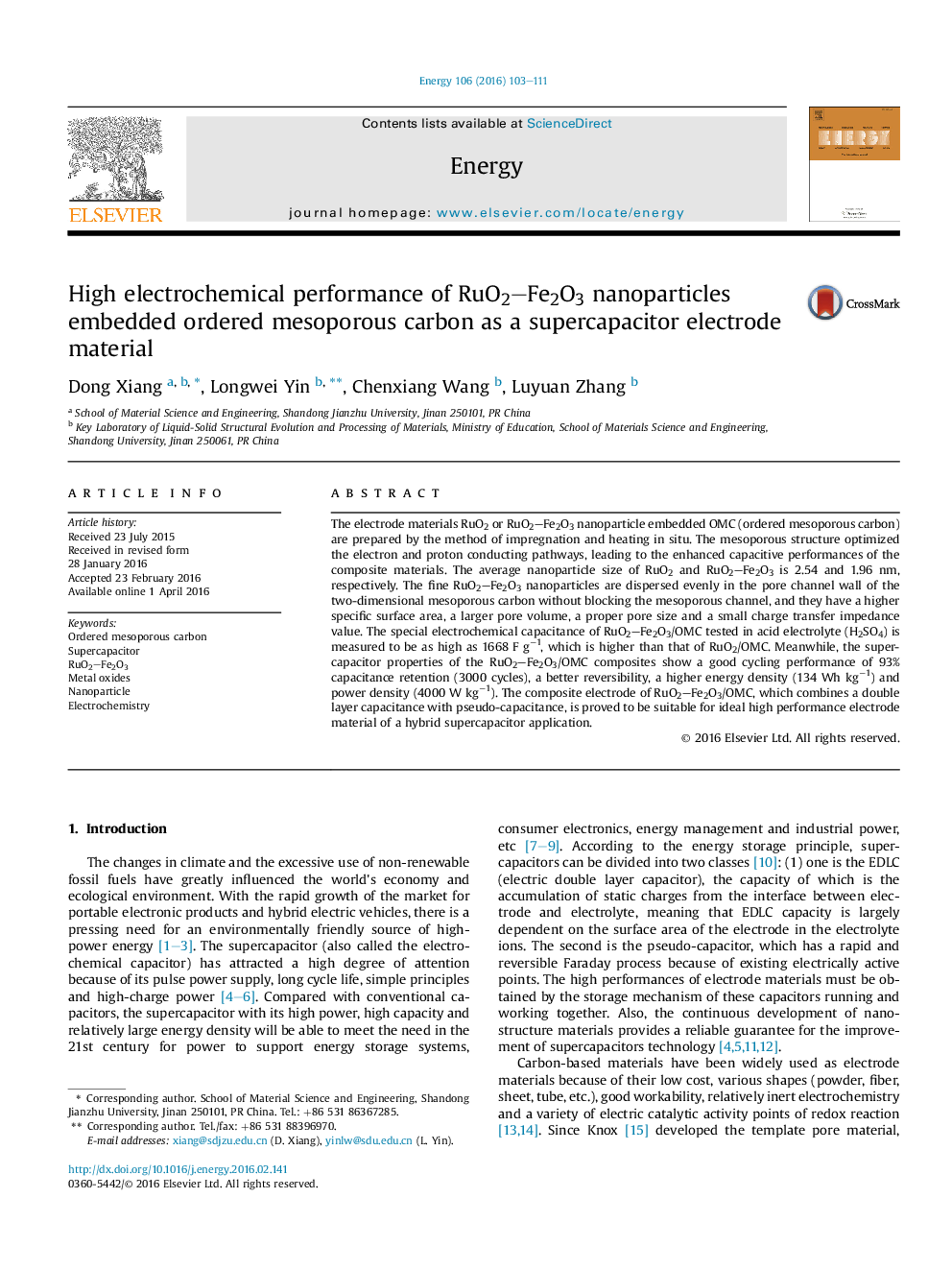| Article ID | Journal | Published Year | Pages | File Type |
|---|---|---|---|---|
| 1730941 | Energy | 2016 | 9 Pages |
•The nanocomposites of RuO2–Fe2O3/OMC are prepared by impregnation and heating in situ.•The fine RuO2–Fe2O3 nanoparticles distribute in the pore channel wall of OMC.•We discuss a reversible redox reaction mechanism of RuO2–Fe2O3/OMC in acid solutions.•RuO2–Fe2O3 nanoparticles embedded OMC shows a higher supercapacitive performance.
The electrode materials RuO2 or RuO2–Fe2O3 nanoparticle embedded OMC (ordered mesoporous carbon) are prepared by the method of impregnation and heating in situ. The mesoporous structure optimized the electron and proton conducting pathways, leading to the enhanced capacitive performances of the composite materials. The average nanoparticle size of RuO2 and RuO2–Fe2O3 is 2.54 and 1.96 nm, respectively. The fine RuO2–Fe2O3 nanoparticles are dispersed evenly in the pore channel wall of the two-dimensional mesoporous carbon without blocking the mesoporous channel, and they have a higher specific surface area, a larger pore volume, a proper pore size and a small charge transfer impedance value. The special electrochemical capacitance of RuO2–Fe2O3/OMC tested in acid electrolyte (H2SO4) is measured to be as high as 1668 F g−1, which is higher than that of RuO2/OMC. Meanwhile, the supercapacitor properties of the RuO2–Fe2O3/OMC composites show a good cycling performance of 93% capacitance retention (3000 cycles), a better reversibility, a higher energy density (134 Wh kg−1) and power density (4000 W kg−1). The composite electrode of RuO2–Fe2O3/OMC, which combines a double layer capacitance with pseudo-capacitance, is proved to be suitable for ideal high performance electrode material of a hybrid supercapacitor application.
